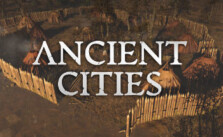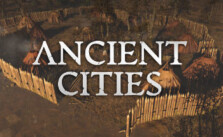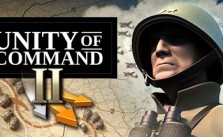Unity of Command II – Tips for Attacking Cities

Benefits for the defender
Why is it hard to attack cities in the first place?
- In case of an attack, the defender in a city gets 1 defensive shift in his favor.
- Attacking a city with a tank unit is futile (no armor shift applies if you attack into a city; the defender gets 2 defensive shifts in his favor if you attack him with tanks).
- “Suppressive fire” is less effective against targets in cities (only 40% chance per roll to cause a suppression; default = 50%) and – most importantly – has a very high chance to turn the city into ruins (10% for each artillery shift; –> artillery shift 3 –> 30% chance!). A ruined city is extremely hard to take (see below).
- Air/Bomb strikes are less effective against targets in cities (-1 shift; -2 if the target is fortified/entrenched) and have 6% chance to turn the city into ruins.
- If the defender is entrenched/fortified, no artillery shifts apply for the attacker.
For these reasons, the typical standard attack tactics (relying on the artillery shift, relying on suppressive fire, relying on tanks vs. infantry in the open) don’t work against targets in cities.
The ideal unit to attack cities
First, I think it’s important to point out that your ideal unit to attack a city is a strong infantry unit with engineer and artillery support. It’s also beneficial if the unit has 2 engineers + 1 artillery, or 2 artillery + 1 engineer. In both cases, additional specialist steps provide you with extra benefits. A second artillery special step will give you more punch but a higher risk of turning the city into ruins. A second engineer’s special step is particularly useful if the enemy has two entrenchment levels (“fortified”). If you have a choice, I’d prefer 2 engineer steps over 2 arty steps.
Step 1: Reduce the enemy’s fortifications = activate your artillery!
If the enemy defending the city is entrenched or fortified, you first need to destroy his fortifications. If you let the enemy keep his fortifications, you will miss out on your most important offensive weapon, the artillery shift (typically +3; can be maxed out for +5, though!). “Suppressive fire” (25% chance to destroy a level of entrenchment) is not a good way to attack cities, as it has such a high chance to turn the city into ruins. But there are still two options left:
- Standard attack: If your unit has at least one active engineer step and your attack will at least suppress/KIA one enemy step, then you might opt for a standard attack. It will reduce the enemy’s fortifications by 1 level. If you have two active engineer steps, it’s even better as you will reduce the fortifications by 2 levels! Even if you should suffer a casualty yourself, that’s a small price for “activating” your artillery in the oncoming turns.
- “Set piece attack”: This is a special HQ action. Only infantry units with an active artillery step can carry out this action, and the unit must start its turn adjacent to the city. Note that a unit can no longer move after this action (no rotation possible). It works across minor but not major rivers. Generally speaking, a “set-piece attack” is a standard attack with a special +2 shift in favor of the attacker. All KIAs on both sides are turned into suppression only. But most importantly, if you achieve final odds of at least 0 with your set-piece attack, the defender automatically loses 1 level of his fortifications. If you have an active engineer step, he automatically loses 2 levels! If your odds are worse than 0, there is still some chance.
Both options seem to be equally suitable for destroying enemy fortifications if you have at least 1 engineer step. The standard attack may result in actual losses for the attacker, while the set-piece attack only results in suppressions. On the flip-side, the set-piece attack is less flexible (no movement, consumes CP) and has a slightly higher chance of turning the city into ruins.
Step 2: Dislodge (not destroy) the enemy!
Now that you have reduced the defender’s entrenchments to 0 and thereby have gained back your artillery support, you should be able to dislodge the enemy quite easily. The only advantage the enemy now holds is a meager 1 defensive shift in his favor. This should be countered easily by your artillery shift (towed arty + 3, self-propelled arty +2).
As you will often find yourself under time pressure in UoC, you should concentrate on dislodging rather than destroying the enemy. For this reason, you should make sure that your opponent has an open retreat path. Don’t surround the city completely. Dislodging an enemy is usually quicker than cutting him off supply and grinding him down.
The best way to force a retreat on the opponent is a “set-piece attack.” Simply because it gives you an extra + 2 shift over the normal attack and thereby increases the chance of retreat even further, you can look up the retreat chances in the manual. For example, if you manage to achieve an odds number of 3, the defender has a 50% chance to retreat.
The downsides of the set-piece attack still apply, though: as there is no movement allowed after a set-piece attack, you need a second unit to capture the city (and prevent the enemy from re-entering the city in his next turn). This can be very tricky when unbridged rivers are involved. So, in some cases, you might need to rely on the more risky ordinary attack instead. Also, the set-piece attack still has a slightly increased chance of turning the city into ruins.
Ruins: Don’t do that!
Whenever you order an air/bomber strike on a city or target/attack it with your artillery (“suppressive fire”, “set-piece attack,” ordinary attacks if artillery steps are involved), there is a chance that the city is turned into ruins:
- Suppressive fire: 10% per artillery shift
- airstrike or saturation strike: 6% chance (for each strike; NOTE: only the explicit target hex of an airstrike can be turned into ruins, not the adjacent hexes)
- set-piece attack: 4% per artillery shift
- ordinary attack: 2% per artillery shift
Ruins are particularly defensible:
- The defensive shift of 3 favors the defender (in an ordinary city, it’s just 1!)
- No artillery shift applies (regardless of whether the defenders are entrenched or not)
- Suppressive fire is much less effective against units in ruins (35% chance per roll)
So, in essence, a city that has been turned into ruins is extremely hard to take. In this case, your chances of dislodging the enemy in the way described above are very slim. Against an enemy in ruins, you will have to lay a proper siege, cut the enemy off supply and slowly grind him down. It’s Stalingrad.
Don’t attack a tiny front…
Last but not least, it’s usually not a good idea to attack a city along a tiny/narrow corridor. You should try to bring more units adjacent to the city (but remember that you might want to leave a retreat path open). By having multiple units adjacent to the city, you can run more attacks per turn. Also, a narrow corridor can be dangerous for two reasons: 1) Your attacks on the city will suppress some of your steps, including your artillery. This makes your attacking unit vulnerable in your opponent’s turn. It’s better to cover/protect your attacking unit with other units! 2) If you’re attacking along a narrow corridor, you increase the chance for your infantry units to get cornered (if a unit is forced to retreat but cannot do so, it is “cornered”). The ordinary method to prevent that is to leave some hexes “open,” which is a bad idea in a narrow corridor (supply!).








Thanks for those tips; I have watched many YouTube videos, tutorials, first plays, etc.
But I am so bad at this game, I can’t even pass the tutorial campaign scenario called “Run for Tunis” supposed to be completed under 6 turns. Impossible to crack it.
Very steep learning curve, I will always practice until I understand it.